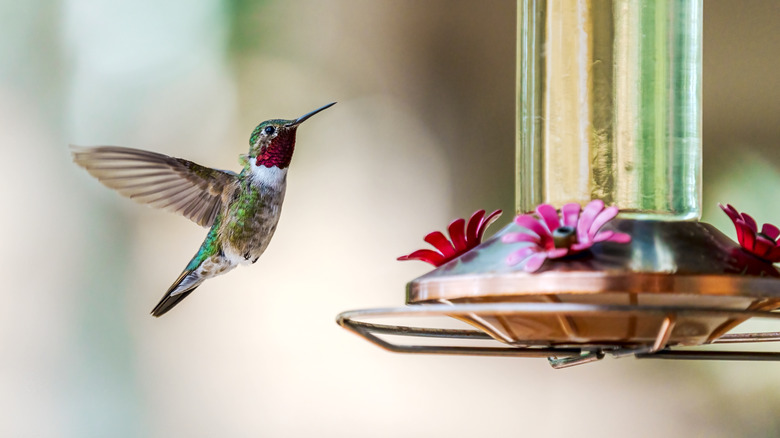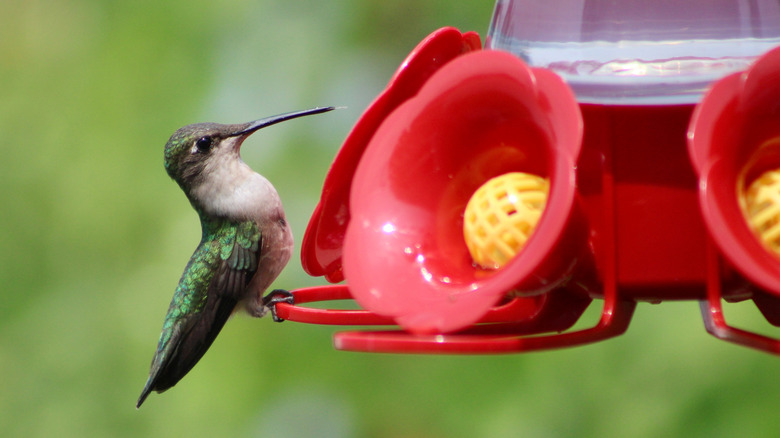The Only Sugar You Should Be Using In Your DIY Hummingbird Nectar
There's something magical about catching a glimpse of a hummingbird in flight, so it's no wonder so many people try to attract them to their yards by setting up a hummingbird feeder. For these feeders, people may even try to fill them with DIY hummingbird nectar. But if you do so, you need to make sure you use the right ingredients for the birds — specifically, the right kind of sugar. The fact is, hummingbird nectar should only include two ingredients: water and sugar, and only one type of sugar is good for these little birds. Pure white granulated sugar, the kind of pantry staple you already have in your kitchen, is the only safe sugar for homemade hummingbird nectar.
All other types of sugar are dangerous for these feathery visitors for one main reason: Most sugars contain iron, a nutrient that's necessary for humans but is difficult for hummingbirds to digest. Iron becomes toxic once it begins to accumulate in the bird's system.
Many sugars, such as molasses, contain large amounts of iron. In fact, brown sugar is created by combining molasses with white sugar, making it a tasty ingredient in desserts but a toxic treat for hummingbirds. On the other hand, when granulated white sugar is refined, the process purifies the sugar of any harmful ingredients and removes the molasses. And when mixed with water to create nectar, it most closely resembles what hummingbirds would find in nature.
The best way to feed hummingbirds
When making hummingbird nectar at home, your only option is granulated white sugar. Other options, including artificial sweeteners and honey, aren't ideal. In the case of sugar substitutes, these additives don't provide hummingbirds with the calories they need for energy. And as for honey, when combined with water, honey can begin to ferment quickly and your hummingbird feeder will consequently begin to grow dangerous bacteria and mold.
To create your own safe hummingbird nectar, combine 4 parts water with 1 part granulated sugar, and don't add food coloring to the mixture. While hummingbirds are attracted to the color red, it's safer to keep the nectar pure and instead choose a feeder that already features the color. Don't be concerned that this sugary mixture isn't nutritious enough to keep birds healthy. Keep in mind that hummingbirds obtain a large amount of nutrients from eating small insects, which supply them with protein. The nectar in your feeder will supplement their diet by keeping them hydrated and providing them with extra energy.
The nectar should be changed out and the feeder cleaned every few days, more frequently if the temperature is warmer than 90 degrees Fahrenheit so that bacteria won't begin to grow. Because these little birds tend to be very territorial, it's also helpful to offer several small feeders in your yard rather than one large one, so that there's room for everyone to enjoy a visit.

